J. Senthilnath
A Spatial-Physics Informed Model for 3D Spiral Sample Scanned by SQUID Microscopy
Jul 16, 2025Abstract:The development of advanced packaging is essential in the semiconductor manufacturing industry. However, non-destructive testing (NDT) of advanced packaging becomes increasingly challenging due to the depth and complexity of the layers involved. In such a scenario, Magnetic field imaging (MFI) enables the imaging of magnetic fields generated by currents. For MFI to be effective in NDT, the magnetic fields must be converted into current density. This conversion has typically relied solely on a Fast Fourier Transform (FFT) for magnetic field inversion; however, the existing approach does not consider eddy current effects or image misalignment in the test setup. In this paper, we present a spatial-physics informed model (SPIM) designed for a 3D spiral sample scanned using Superconducting QUantum Interference Device (SQUID) microscopy. The SPIM encompasses three key components: i) magnetic image enhancement by aligning all the "sharp" wire field signals to mitigate the eddy current effect using both in-phase (I-channel) and quadrature-phase (Q-channel) images; (ii) magnetic image alignment that addresses skew effects caused by any misalignment of the scanning SQUID microscope relative to the wire segments; and (iii) an inversion method for converting magnetic fields to magnetic currents by integrating the Biot-Savart Law with FFT. The results show that the SPIM improves I-channel sharpness by 0.3% and reduces Q-channel sharpness by 25%. Also, we were able to remove rotational and skew misalignments of 0.30 in a real image. Overall, SPIM highlights the potential of combining spatial analysis with physics-driven models in practical applications.
* copyright 2025 IEEE. Personal use of this material is permitted. Permission from IEEE must be obtained for all other uses, in any current or future media, including reprinting/republishing this material for advertising or promotional purposes, creating new collective works, for resale or redistribution to servers or lists, or reuse of any copyrighted component of this work in other works
Double Oracle Neural Architecture Search for Game Theoretic Deep Learning Models
Oct 07, 2024



Abstract:In this paper, we propose a new approach to train deep learning models using game theory concepts including Generative Adversarial Networks (GANs) and Adversarial Training (AT) where we deploy a double-oracle framework using best response oracles. GAN is essentially a two-player zero-sum game between the generator and the discriminator. The same concept can be applied to AT with attacker and classifier as players. Training these models is challenging as a pure Nash equilibrium may not exist and even finding the mixed Nash equilibrium is difficult as training algorithms for both GAN and AT have a large-scale strategy space. Extending our preliminary model DO-GAN, we propose the methods to apply the double oracle framework concept to Adversarial Neural Architecture Search (NAS for GAN) and Adversarial Training (NAS for AT) algorithms. We first generalize the players' strategies as the trained models of generator and discriminator from the best response oracles. We then compute the meta-strategies using a linear program. For scalability of the framework where multiple network models of best responses are stored in the memory, we prune the weakly-dominated players' strategies to keep the oracles from becoming intractable. Finally, we conduct experiments on MNIST, CIFAR-10 and TinyImageNet for DONAS-GAN. We also evaluate the robustness under FGSM and PGD attacks on CIFAR-10, SVHN and TinyImageNet for DONAS-AT. We show that all our variants have significant improvements in both subjective qualitative evaluation and quantitative metrics, compared with their respective base architectures.
Self-evolving Autoencoder Embedded Q-Network
Feb 18, 2024



Abstract:In the realm of sequential decision-making tasks, the exploration capability of a reinforcement learning (RL) agent is paramount for achieving high rewards through interactions with the environment. To enhance this crucial ability, we propose SAQN, a novel approach wherein a self-evolving autoencoder (SA) is embedded with a Q-Network (QN). In SAQN, the self-evolving autoencoder architecture adapts and evolves as the agent explores the environment. This evolution enables the autoencoder to capture a diverse range of raw observations and represent them effectively in its latent space. By leveraging the disentangled states extracted from the encoder generated latent space, the QN is trained to determine optimal actions that improve rewards. During the evolution of the autoencoder architecture, a bias-variance regulatory strategy is employed to elicit the optimal response from the RL agent. This strategy involves two key components: (i) fostering the growth of nodes to retain previously acquired knowledge, ensuring a rich representation of the environment, and (ii) pruning the least contributing nodes to maintain a more manageable and tractable latent space. Extensive experimental evaluations conducted on three distinct benchmark environments and a real-world molecular environment demonstrate that the proposed SAQN significantly outperforms state-of-the-art counterparts. The results highlight the effectiveness of the self-evolving autoencoder and its collaboration with the Q-Network in tackling sequential decision-making tasks.
Evolving Restricted Boltzmann Machine-Kohonen Network for Online Clustering
Feb 14, 2024



Abstract:A novel online clustering algorithm is presented where an Evolving Restricted Boltzmann Machine (ERBM) is embedded with a Kohonen Network called ERBM-KNet. The proposed ERBM-KNet efficiently handles streaming data in a single-pass mode using the ERBM, employing a bias-variance strategy for neuron growing and pruning, as well as online clustering based on a cluster update strategy for cluster prediction and cluster center update using KNet. Initially, ERBM evolves its architecture while processing unlabeled image data, effectively disentangling the data distribution in the latent space. Subsequently, the KNet utilizes the feature extracted from ERBM to predict the number of clusters and updates the cluster centers. By overcoming the common challenges associated with clustering algorithms, such as prior initialization of the number of clusters and subpar clustering accuracy, the proposed ERBM-KNet offers significant improvements. Extensive experimental evaluations on four benchmarks and one industry dataset demonstrate the superiority of ERBM-KNet compared to state-of-the-art approaches.
Bayesian optimized physics-informed neural network for estimating wave propagation velocities
Dec 21, 2023Abstract:In this paper, we propose a novel inverse parameter estimation approach called Bayesian optimized physics-informed neural network (BOPINN). In this study, a PINN solves the partial differential equation (PDE), whereas Bayesian optimization (BO) estimates its parameter. The proposed BOPINN estimates wave velocity associated with wave propagation PDE using a single snapshot observation. An objective function for BO is defined as the mean squared error (MSE) between the surrogate displacement field and snapshot observation. The inverse estimation capability of the proposed approach is tested in three different isotropic media with different wave velocities. From the obtained results, we have observed that BOPINN can accurately estimate wave velocities with lower MSE, even in the presence of noisy conditions. The proposed algorithm shows robust predictions in limited iterations across different runs.
Quantile Online Learning for Semiconductor Failure Analysis
Mar 13, 2023



Abstract:With high device integration density and evolving sophisticated device structures in semiconductor chips, detecting defects becomes elusive and complex. Conventionally, machine learning (ML)-guided failure analysis is performed with offline batch mode training. However, the occurrence of new types of failures or changes in the data distribution demands retraining the model. During the manufacturing process, detecting defects in a single-pass online fashion is more challenging and favoured. This paper focuses on novel quantile online learning for semiconductor failure analysis. The proposed method is applied to semiconductor device-level defects: FinFET bridge defect, GAA-FET bridge defect, GAA-FET dislocation defect, and a public database: SECOM. From the obtained results, we observed that the proposed method is able to perform better than the existing methods. Our proposed method achieved an overall accuracy of 86.66% and compared with the second-best existing method it improves 15.50% on the GAA-FET dislocation defect dataset.
Towards deep generation of guided wave representations for composite materials
Dec 13, 2022Abstract:Laminated composite materials are widely used in most fields of engineering. Wave propagation analysis plays an essential role in understanding the short-duration transient response of composite structures. The forward physics-based models are utilized to map from elastic properties space to wave propagation behavior in a laminated composite material. Due to the high-frequency, multi-modal, and dispersive nature of the guided waves, the physics-based simulations are computationally demanding. It makes property prediction, generation, and material design problems more challenging. In this work, a forward physics-based simulator such as the stiffness matrix method is utilized to collect group velocities of guided waves for a set of composite materials. A variational autoencoder (VAE)-based deep generative model is proposed for the generation of new and realistic polar group velocity representations. It is observed that the deep generator is able to reconstruct unseen representations with very low mean square reconstruction error. Global Monte Carlo and directional equally-spaced samplers are used to sample the continuous, complete and organized low-dimensional latent space of VAE. The sampled point is fed into the trained decoder to generate new polar representations. The network has shown exceptional generation capabilities. It is also seen that the latent space forms a conceptual space where different directions and regions show inherent patterns related to the generated representations and their corresponding material properties.
An Efficient Approach with Dynamic Multi-Swarm of UAVs for Forest Firefighting
Nov 03, 2022



Abstract:In this paper, the Multi-Swarm Cooperative Information-driven search and Divide and Conquer mitigation control (MSCIDC) approach is proposed for faster detection and mitigation of forest fire by reducing the loss of biodiversity, nutrients, soil moisture, and other intangible benefits. A swarm is a cooperative group of Unmanned Aerial Vehicles (UAVs) that fly together to search and quench the fire effectively. The multi-swarm cooperative information-driven search uses a multi-level search comprising cooperative information-driven exploration and exploitation for quick/accurate detection of fire location. The search level is selected based on the thermal sensor information about the potential fire area. The dynamicity of swarms, aided by global regulative repulsion and merging between swarms, reduces the detection and mitigation time compared to the existing methods. The local attraction among the members of the swarm helps the non-detector members to reach the fire location faster, and divide-and-conquer mitigation control ensures a non-overlapping fire sector allocation for all members quenching the fire. The performance of MSCIDC has been compared with different multi-UAV methods using a simulated environment of pine forest. The performance clearly shows that MSCIDC mitigates fire much faster than the multi-UAV methods. The Monte-Carlo simulation results indicate that the proposed method reduces the average forest area burnt by $65\%$ and mission time by $60\%$ compared to the best result case of the multi-UAV approaches, guaranteeing a faster and successful mission.
DRBM-ClustNet: A Deep Restricted Boltzmann-Kohonen Architecture for Data Clustering
May 13, 2022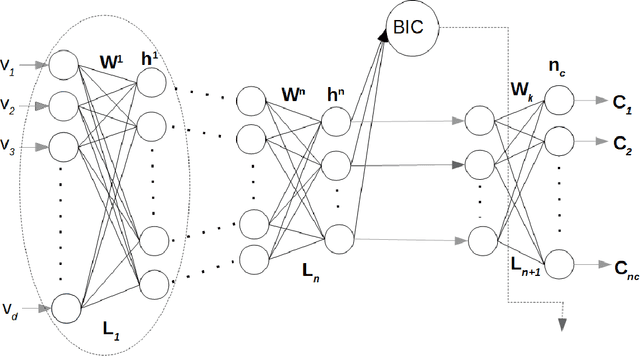
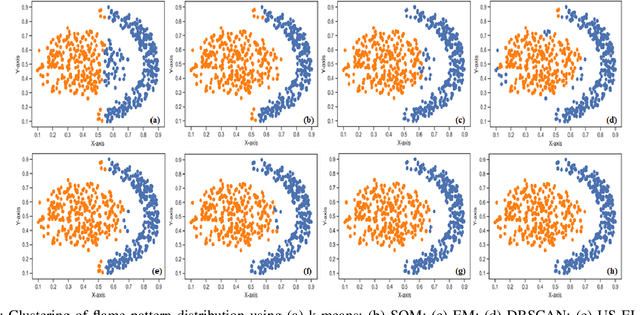
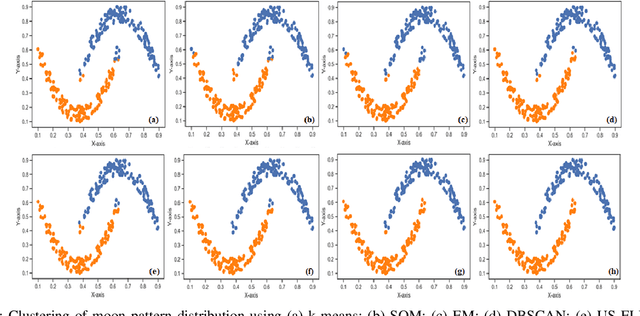
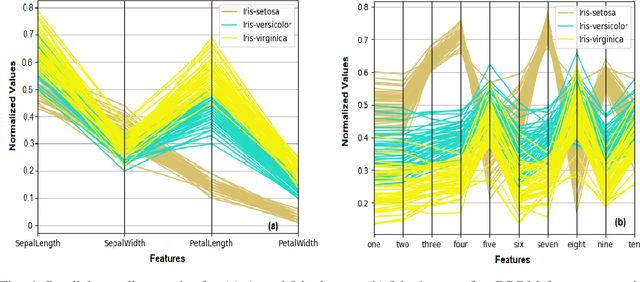
Abstract:A Bayesian Deep Restricted Boltzmann-Kohonen architecture for data clustering termed as DRBM-ClustNet is proposed. This core-clustering engine consists of a Deep Restricted Boltzmann Machine (DRBM) for processing unlabeled data by creating new features that are uncorrelated and have large variance with each other. Next, the number of clusters are predicted using the Bayesian Information Criterion (BIC), followed by a Kohonen Network-based clustering layer. The processing of unlabeled data is done in three stages for efficient clustering of the non-linearly separable datasets. In the first stage, DRBM performs non-linear feature extraction by capturing the highly complex data representation by projecting the feature vectors of $d$ dimensions into $n$ dimensions. Most clustering algorithms require the number of clusters to be decided a priori, hence here to automate the number of clusters in the second stage we use BIC. In the third stage, the number of clusters derived from BIC forms the input for the Kohonen network, which performs clustering of the feature-extracted data obtained from the DRBM. This method overcomes the general disadvantages of clustering algorithms like the prior specification of the number of clusters, convergence to local optima and poor clustering accuracy on non-linear datasets. In this research we use two synthetic datasets, fifteen benchmark datasets from the UCI Machine Learning repository, and four image datasets to analyze the DRBM-ClustNet. The proposed framework is evaluated based on clustering accuracy and ranked against other state-of-the-art clustering methods. The obtained results demonstrate that the DRBM-ClustNet outperforms state-of-the-art clustering algorithms.
Inverse characterization of composites using guided waves and convolutional neural networks with dual-branch feature fusion
Apr 22, 2022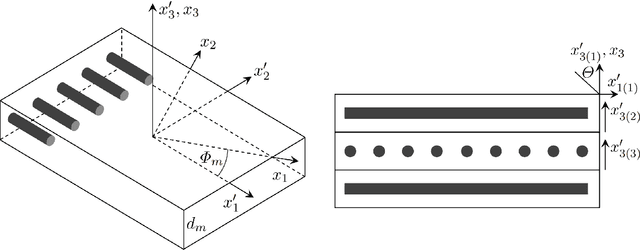
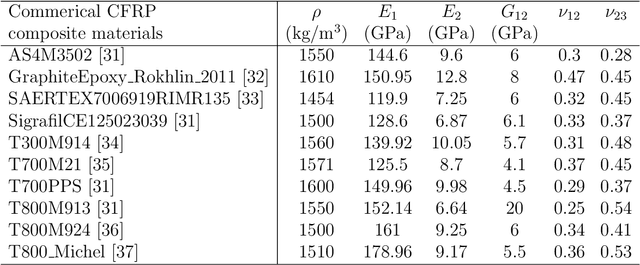
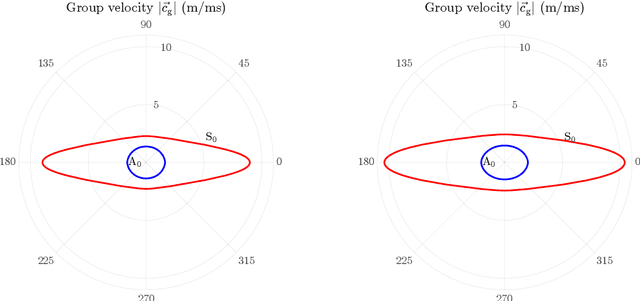
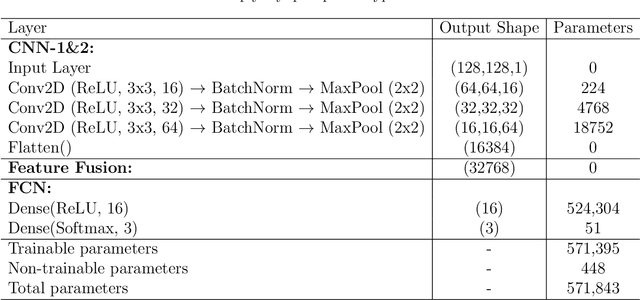
Abstract:In this work, ultrasonic guided waves and a dual-branch version of convolutional neural networks are used to solve two different but related inverse problems, i.e., finding layup sequence type and identifying material properties. In the forward problem, polar group velocity representations are obtained for two fundamental Lamb wave modes using the stiffness matrix method. For the inverse problems, a supervised classification-based network is implemented to classify the polar representations into different layup sequence types (inverse problem - 1) and a regression-based network is utilized to identify the material properties (inverse problem - 2)
 Add to Chrome
Add to Chrome Add to Firefox
Add to Firefox Add to Edge
Add to Edge